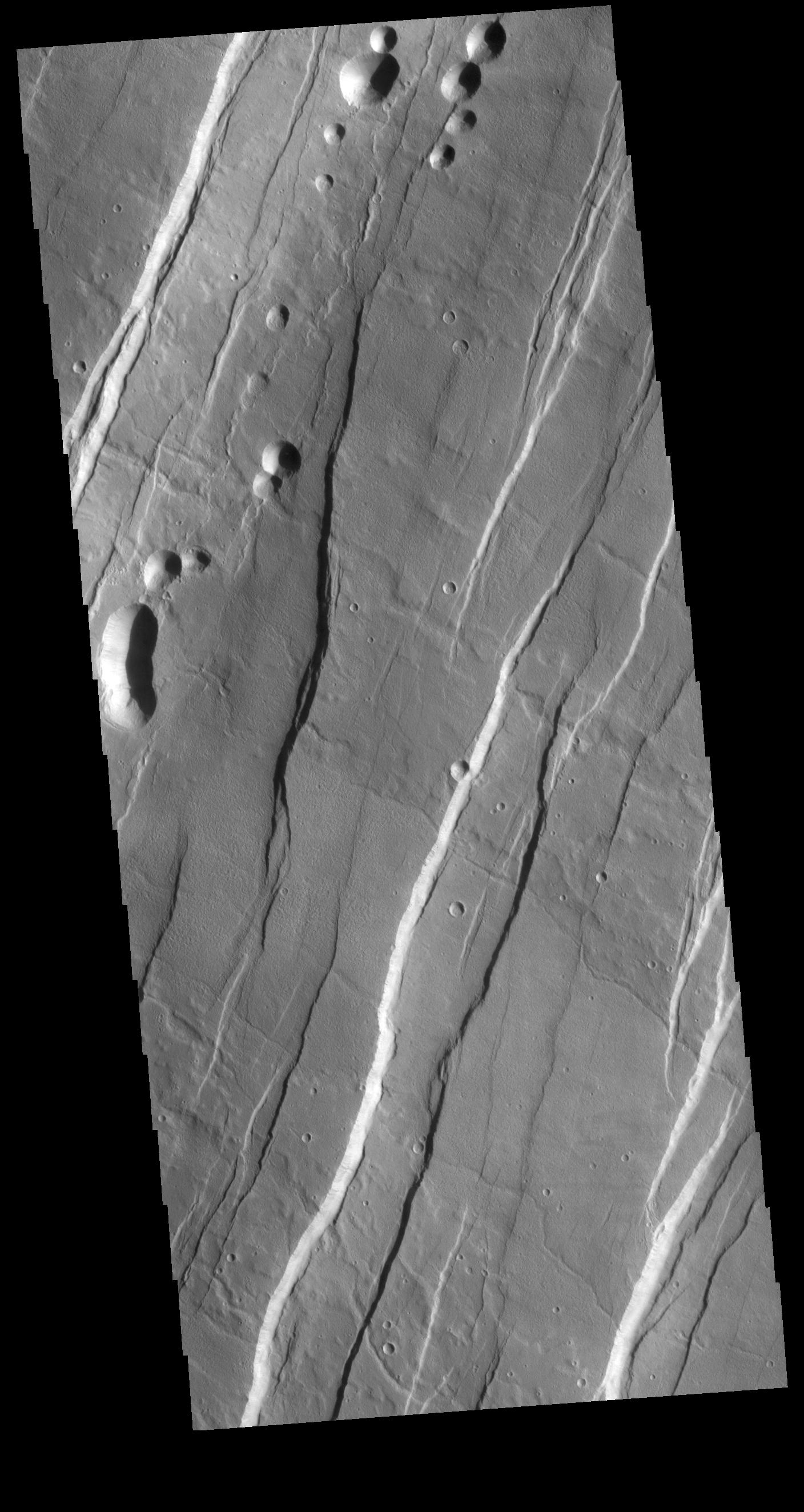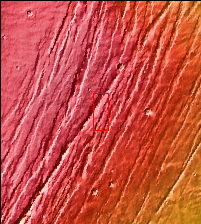
|
Phlegethon Catena
- Click the image above for a larger view
- Full-Res JPEG (1408 x 2648) (350.8 kB)
- Full-Res TIFF (1408 x 2648) (2.7 MB)
Caption:

Context image
This VIS image is located on the eastern flank of Alba Mons. Linear faults and graben surround the volcano aligned north/south, intersecting and deflected around the summit. The large graben with the small circular pits in the upper left part of this image is called Phlegethon Catena. The term catena means a string of craters or circular depressions. The depressions in this image were likely formed by the collapse of the preexisting surface into a subsurface void. Graben are caused by blocks of material that drop down along paired faults, and are formed due to tectonic forces. It may be that lava flowed along the trace of the graben and left behind a subsurface lava tube. As the roof of the tube collapses the circular features are created.
Orbit Number: 79042 Latitude: 38.8641 Longitude: 256.979 Instrument: VIS Captured: 2019-10-09 15:28
Background Info:
Please see the THEMIS Data Citation Note for details on crediting THEMIS images.
NASA's Jet Propulsion Laboratory manages the 2001 Mars Odyssey mission for NASA's Science Mission Directorate, Washington, D.C. The Thermal Emission Imaging System (THEMIS) was developed by Arizona State University, Tempe, in collaboration with Raytheon Santa Barbara Remote Sensing. The THEMIS investigation is led by Dr. Philip Christensen at Arizona State University. Lockheed Martin Astronautics, Denver, is the prime contractor for the Odyssey project, and developed and built the orbiter. Mission operations are conducted jointly from Lockheed Martin and from JPL, a division of the California Institute of Technology in Pasadena.
Cataloging Keywords:
| Name | Value | Additional Values |
|---|---|---|
| Target | Mars | |
| System | ||
| Target Type | Planet | |
| Mission | 2001 Mars Odyssey | |
| Instrument Host | Mars Odyssey | |
| Host Type | Orbiter | |
| Instrument | Thermal Emission Imaging System (THEMIS) | |
| Detector | ||
| Extra Keywords | Crater, Grayscale, Mountain, Thermal, Volcano | |
| Acquisition Date | ||
| Release Date | 2019-11-20 | |
| Date in Caption | 2019-10-09 | |
| Image Credit | NASA/JPL-Caltech/ASU | |
| Source | photojournal.jpl.nasa.gov/catalog/PIA23563 | |
| Identifier | PIA23563 | |
